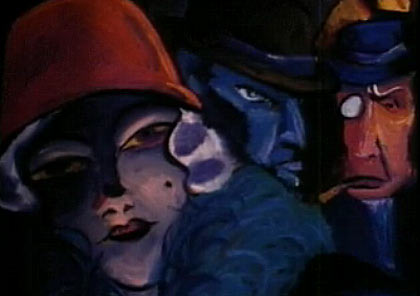Sunday, 8 May 2011
Experimental Animation
During the Avant- Garde and Abstract Art era of film making a new type of animation, paralleling these movements, emerged. Standing as a contrast to "commercial" animation, this type of animation sought to explore new techniques , use animation as a means of artistic self expresion, and create new ways of animating.
Experimental animation is usually done by an individual as opposed to a studio, and is usually produced with much smaller budgets than other animations. However, this is not an impediment but, on the contrary, it seems to help with the experimental nature of this art form by forcing the creator to think outside of the box. Although not usually not commercially successful, experimental animations have nonetheless left an imprint on mainstream animation, influencing such works as Disney's "Fantasia".
Hans Richter's "Rhythm. 23" from 1923:
Andrzej Pawlowski's "Here and There" (1957)
Len Lye's "Free Radicals" (1958):
Oskar Fischinger's "Danse Macabre":
Normal McLaren's "Dots" (1940):
Mary Ellen Bute's "Synchromy No. 4":
Walter Ruttman's "Opus I" :
As we can see, experimental animators play with form, colors, textures, rhythm, combine mediums, use controversial images and rarely use storytelling, all in an attempt to illicit emotion from the viewer.
While not a fan of experimental or abstract animation, I find some of them quite interesting and inspirational. The raw emotions and images one derives form viewing such animations are a great way of getting inspiration for any art form.
Subscribe to:
Post Comments (Atom)


Glad to see your view on the subject. I think you missed an important point, though. That point is the development of computer graphics out of the abstract. The developments taken with abstract graphics allowed for another path that wouldn't have otherwise been possible.
ReplyDelete